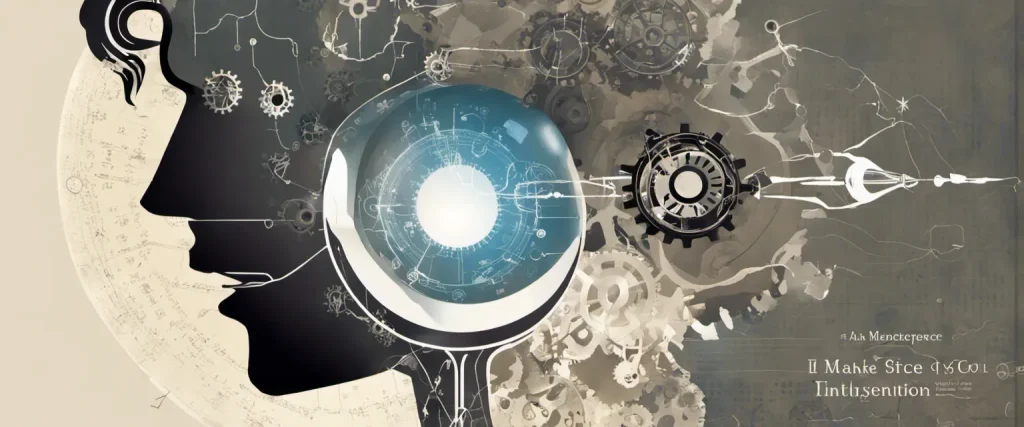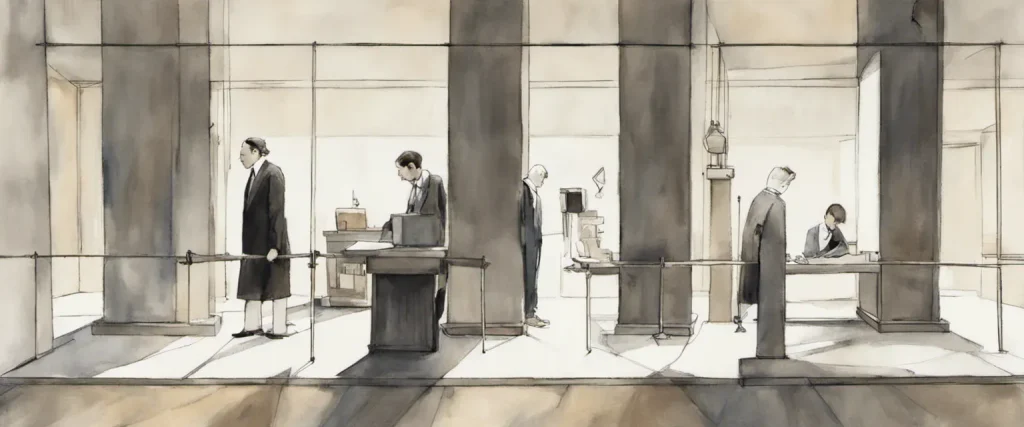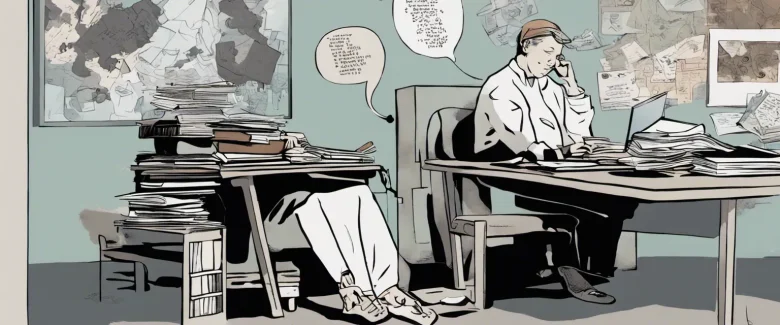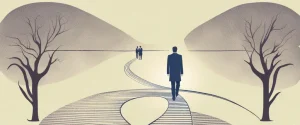In “The Undoing Project,” Michael Lewis delves into the fascinating partnership between two Israeli psychologists, Daniel Kahneman and Amos Tversky, who turned the study of human decision-making on its head. Through their groundbreaking research, Kahneman and Tversky revolutionized the field of behavioral economics, uncovering the systematic biases and cognitive illusions that shape our choices. In this captivating exploration of their friendship and work, Lewis explores how these two unassuming individuals defied conventional thinking and forever changed the way we understand ourselves. Known for his compelling narrative style and keen insights into the human psyche, Michael Lewis is an acclaimed author and journalist renowned for his bestsellers “Moneyball,” “The Big Short,” and “The Blind Side.
Chapter 1: Introduction to Danny and Amos
Chapter 1: Introduction to Danny and Amos from Michael Lewis’ book, The Undoing Project, provides an insight into the lives and backgrounds of the book’s central characters, psychologists Daniel Kahneman (Danny) and Amos Tversky. Lewis explores their early lives in separate locations and their eventual meeting at the Hebrew University of Jerusalem, where their collaboration and groundbreaking research begins.
Danny’s beginnings are marked by the harrowing experiences of World War II. Having grown up in Paris, he witnesses the Nazi invasion and the impact of their anti-Semitic policies on his family. He manages to escape to Palestine with his mother and joins the Jewish Brigade, witnessing more violence and destruction during his time serving in the Israeli army. These experiences shape Danny’s perspective on human decision-making and lead him to become interested in psychology.
Amos, on the other hand, grows up in the United States. Raised in a Jewish family in Brooklyn, he is academically gifted and experiences a largely sheltered childhood. However, his exceptional intelligence isolates him from his peers, leading him to explore mathematics and psychology. Amos develops a rebellious streak and establishes himself as an original thinker.
Both Danny and Amos find themselves at the Hebrew University, where their association begins. Initially, Danny is skeptical of Amos’s unconventional ideas, but their personalities and interests ultimately complement each other. Amos’s charisma, charm, and innovative ideas captivate Danny, and they embark on research collaborations that challenge conventional wisdom.
The chapter sets the stage for an in-depth exploration of the unique partnership between Danny and Amos, who will go on to revolutionize the field of psychology with their groundbreaking theories on cognitive biases and heuristics. Their collaboration not only has a profound impact on academia but also influences fields such as medicine, economics, and military strategy.
Chapter 2: The Birth of Behavioral Economics
Chapter 2 of Michael Lewis’s book, “The Undoing Project: A Friendship That Changed Our Minds,” explores the birth of behavioral economics. The chapter introduces two key figures in this field: Israeli psychologists Daniel Kahneman and Amos Tversky.
Kahneman and Tversky challenged the traditional economic theories that assume humans are rational decision-makers. They argued that people often rely on heuristics and biases, which can lead to systematic errors in judgment. This perception shift initiated a revolution in the way economists understood human behavior.
The chapter delves into the early research conducted by Kahneman and Tversky. Their first groundbreaking paper, “Belief in the Law of Small Numbers,” examined people’s tendency to draw broad conclusions from limited samples or small amounts of data. This work laid the foundation for the prospect theory, which challenged the economic principle of utility and proposed that people’s decisions are influenced by perceived gains and losses rather than potential outcomes.
Lewis also discusses the development of the “availability heuristic,” which suggests that people estimate the probability of future events based on how easily they can recall similar instances. This mental shortcut often leads to misjudgments, as memorable incidents may not be representative of the true odds.
Furthermore, the chapter highlights the collaboration between Kahneman and Tversky, who possessed complementary skills and personalities. Despite their differences, their partnership thrived, resulting in profound insights into the human mind and decision-making process.
In summary, Chapter 2 of “The Undoing Project” presents the early work of Kahneman and Tversky, challenging the traditional view of rational economic decision-making. Their research into heuristics, biases, and mental shortcuts paved the way for the field of behavioral economics, revolutionizing our understanding of human behavior and decision-making processes.
Chapter 3: The Prospect Theory
Chapter 3 of “The Undoing Project” by Michael Lewis dives into the groundbreaking work of psychologists Daniel Kahneman and Amos Tversky, specifically their development and exploration of the Prospect Theory. This theory revolutionized the field of decision-making by challenging the traditional notions of rational behavior.
The chapter begins by delving into Tversky’s personal history and upbringing, revealing how his early life experiences shaped his intellect and curiosity. As he navigates his academic career, Tversky becomes increasingly interested in understanding human decision-making processes, eventually partnering with Kahneman, who shares his passion for the subject.
Together, Tversky and Kahneman develop the Prospect Theory, which challenges the traditional theories of utility and suggests that individuals do not always make rational decisions. The duo discovered that people’s decision-making is influenced by subjective factors, such as their framing of choices, the reference points they use for comparison, and their aversion to loss. This theory also introduced the concept of heuristics or mental shortcuts that individuals use to make decisions quickly, but which can often lead to biases and errors.
To support their theory, Tversky and Kahneman conducted various experiments, including the famous “Asian disease problem.” They found that people’s choices were significantly impacted by the way options were presented to them, even if the mathematical probabilities remained constant. This demonstrated that individuals often rely on intuition and emotion rather than rational calculations.
In conclusion, Chapter 3 of “The Undoing Project” explores the development and impact of the Prospect Theory, which challenged traditional notions of rational decision-making. Tversky and Kahneman’s research demonstrated that human decision-making is subjective, influenced by context, framing, and tendencies to avoid loss. This chapter showcases the groundbreaking insights that paved the way for a deeper understanding of human behavior and decision-making processes.
Chapter 4: Anchoring and Adjustment

Chapter 4 of “The Undoing Project” by Michael Lewis explores the concept of anchoring and adjustment, a cognitive bias discovered by psychologists Amos Tversky and Daniel Kahneman. Anchoring refers to the tendency of people to rely too heavily on the first piece of information presented, which then influences their subsequent judgments and decisions.
The chapter begins with an exploration of how anchoring and adjustment can influence negotiations. Tversky and Kahneman conducted an experiment where participants were asked to spin a wheel that had numbers ranging from 0 to 100. The participants were then asked to estimate the percentage of African countries in the United Nations, with the number on the wheel serving as the anchor. Unsurprisingly, those who spun a higher number guessed a higher percentage, while those who spun a lower number guessed a lower percentage. This experiment demonstrated the power of anchoring in shaping people’s judgments.
Anchoring is not limited to numerical judgments; it can also affect non-numerical decisions. For example, in another experiment, participants were shown a video of a traffic accident. Some were asked, “How fast were the cars going when they hit each other?” while others were asked, “How fast were the cars going when they smashed into each other?” The choice of wording influenced participants’ answers, with those exposed to the word “smashed” providing higher estimates of speed. This shows the impact of anchor words in shaping perception.
Tversky and Kahneman also discovered that anchoring can be exploited by experienced negotiators. By presenting an extreme initial offer, negotiators set a high anchor for the subsequent negotiations, making a more reasonable offer seem amicable by comparison. This tactic takes advantage of the human tendency to adjust from an anchor, leading to more favorable outcomes for the negotiators.
In conclusion, Chapter 4 highlights the cognitive bias of anchoring and adjustment, revealing how the initial presentation of information influences people’s judgments and decision-making. By understanding this bias, individuals can be more aware of its potential impact on their perceptions and avoid being overly swayed by the initial anchor.
Chapter 5: Availability Bias
Chapter 5 of “The Undoing Project” by Michael Lewis focuses on the concept of availability bias and its implications for decision-making. The chapter delves into the research and collaboration between psychologists Daniel Kahneman and Amos Tversky, shedding light on their groundbreaking exploration of cognitive biases.
Availability bias refers to the tendency of individuals to judge the frequency or probability of an event based on how easily examples or instances of it come to mind. Kahneman and Tversky developed experiments to demonstrate how easily individuals can be influenced by this bias. They found that people tend to overestimate the likelihood of events that are more readily available in their memory, such as vivid or recent experiences.
The chapter discusses several examples to illustrate this bias. One such example involves people’s perceptions of crime rates. The media often sensationalizes crime stories, making them more memorable and salient. As a result, individuals tend to overestimate the frequency of crime in their area, leading to irrational fears and judgments.
Furthermore, the chapter explores how availability bias can affect various professions, including medical practitioners and financial analysts. Physicians, for instance, may be influenced by vivid cases they have recently encountered, leading to misdiagnoses or over-treatment. Similarly, financial analysts may be prone to overreacting to recent market events, attributing them greater significance than they warrant.
Overall, Chapter 5 emphasizes how availability bias can lead to systematic errors in judgment and decision-making. Through the research of Kahneman and Tversky, it becomes increasingly evident that human thinking is often influenced by the accessibility of information rather than its actual accuracy. This chapter serves as an important reminder to critically evaluate the basis of our thoughts and decisions, without relying solely on readily available examples.
Chapter 6: The Framing Effect
Chapter 6 of “The Undoing Project” by Michael Lewis, titled “The Framing Effect,” explores the groundbreaking research conducted by psychologists Amos Tversky and Daniel Kahneman on how the presentation of information can significantly influence decision-making and judgments.
The chapter begins by highlighting an experiment conducted by Tversky and Kahneman, in which participants were provided with two different treatments for a hypothetical disease. When presented with the survival probabilities of each treatment using positive framing, participants overwhelmingly chose the riskier option. However, when presented with the same information using negative framing, they mostly preferred the safer option. This contradicted the traditional belief that decision-making was solely based on the evaluation of probabilities and values.
Through numerous studies, Tversky and Kahneman discovered that people tended to avoid risks when options were presented in terms of gains (positive framing) but became more reckless when options were framed in terms of losses (negative framing). This effect, known as the framing effect, showed that individuals’ judgments were heavily influenced by the context in which information was presented, rather than simply the objective facts.
The chapter further delves into the impact of the framing effect across various domains, such as medical decision-making, investments, and political campaigns. Tversky and Kahneman’s research demonstrated that the framing of messages could dramatically alter people’s preferences and choices, even when dealing with life-threatening diseases or significant financial decisions.
Overall, Chapter 6 of “The Undoing Project” highlights Tversky and Kahneman’s pioneering work on the framing effect, revealing how individuals’ decisions and judgments are powerfully impacted by how information is presented, leading to important implications for understanding and influencing human behavior.
Chapter 7: Loss Aversion
Chapter 7 of “The Undoing Project” by Michael Lewis delves into the concept of loss aversion, a psychological bias that influences decision-making processes. Amos Tversky and Daniel Kahneman, the focal points of the book, were two psychologists who conducted groundbreaking research on human behavior and cognition.
The chapter begins by exploring how loss aversion plays a significant role in everyday life. People tend to have a greater emotional response to losses compared to equivalent gains. Kahneman and Tversky’s goal was to understand why humans consistently exhibited this bias and how it affected decision-making, particularly in the field of economics.
The chapter presents numerous experiments that Tversky and Kahneman conducted to study loss aversion. They found that people were more inclined to take risks to avoid losses than to acquire gains. For example, individuals were more willing to gamble when facing a potential loss rather than a potential gain. These findings disproved the conventional economic theory that people always make rational choices to maximize their gains.
The chapter also discusses how loss aversion affected other domains, such as investments and negotiations. Tversky and Kahneman’s research revealed that investors were prone to holding onto losing stocks in the hopes of breaking even, rather than cutting their losses. This behavior demonstrated the powerful influence of loss aversion on financial decision-making.
Furthermore, the chapter explores how loss aversion influences negotiations. People often choose to avoid risks and compromises that could lead to losses, even if it means giving up potential gains. This unwillingness to take risks often hinders effective negotiation processes.
In conclusion, Chapter 7 of “The Undoing Project” focuses on loss aversion, a psychological bias that affects decision-making. Tversky and Kahneman’s research demonstrated that people are more influenced by the fear of losses than they are by potential gains. This bias impacts economic choices, investments, and negotiations, challenging the traditional notions of rational decision-making.

Chapter 8: The Legacy of Danny and Amos
Chapter 8 of “The Undoing Project” by Michael Lewis, titled “The Legacy of Danny and Amos,” explores the lasting impact and legacy of the groundbreaking work done by psychologists Daniel Kahneman and Amos Tversky. This chapter focuses on the subsequent years after their initial collaboration and the profound influence their ideas had on various fields.
Following their revolutionary research on judgment and decision-making, Kahneman and Tversky became widely recognized for their innovative theories. Their perspectives significantly impacted several disciplines, including economics, medicine, and public policy. One prominent example presented by Lewis is the emergence of behavioral economics, which incorporates psychological insights into traditional economic theory.
Kahneman and Tversky’s work challenged the classical rational actor model, which assumed that individuals make rational judgments and decisions. They showed that humans are often prone to systematic cognitive biases and errors. Their ideas gained particular prominence in economic theory as they highlighted how people’s choices and decision-making deviated from traditional models of rationality.
Another area significantly affected by Kahneman and Tversky’s research was medicine. Their findings on the role of judgment and heuristics in medical diagnosis spurred important changes in how doctors approach decision-making. Their work prompted doctors to be aware of potential cognitive biases that can lead to misdiagnosis and influenced the development of evidence-based medicine.
Moreover, the chapter delves into the personal dynamics between Kahneman and Tversky. It reveals how their close friendship and collaboration impacted their work and drove their insatiable curiosity. Despite occasional disagreements, their complementary skills and intellectual synergy created a remarkable partnership that allowed them to challenge prevailing assumptions and generate groundbreaking insights.
Overall, Chapter 8 underscores the enduring impact of Kahneman and Tversky’s work, extending well beyond their initial collaborations. Their legacy continues to shape various academic disciplines and has provoked widespread curiosity about human decision-making and the exploration of the complexities of the human mind.
After Reading
In conclusion, “The Undoing Project” by Michael Lewis delves into the remarkable story of Israeli psychologists Amos Tversky and Daniel Kahneman and their groundbreaking research on human behavior and decision-making. The book explores how their friendship and collaboration led to the development of the field of behavioral economics, revolutionizing our understanding of reasoning, judgment, and intuition. Through Lewis’ captivating narrative, readers gain insight into the complexities of the human mind and the impact Tversky and Kahneman’s work continues to have on various fields, including finance, medicine, and politics. Overall, “The Undoing Project” serves as a tribute to two extraordinary individuals who forever changed our understanding of how humans think and make choices.
1. Man’s Search For Meaning” by Viktor E. Frankl: A profound memoir by Viktor Frankl, this book explores his experiences as a Holocaust survivor and psychiatrist. Frankl’s reflections on finding purpose amidst suffering provide valuable insights into the human condition.
2. Sources of Power” by Gary Klein: In this book, Gary Klein delves into the decision-making process, examining how real experts make choices under pressure. Klein’s research on how individuals think and act in complex and uncertain circumstances offers practical advice on enhancing decision-making skills.
3. The Art of Seduction” by Robert Greene: Drawing inspiration from historical figures, Robert Greene explores the dynamics of seduction in this intriguing book. By examining various psychological strategies and techniques, he offers insights into the power dynamics of relationships and personal influence.
4. “Thinking, Fast and Slow” by Daniel Kahneman: Nobel laureate Daniel Kahneman delves into the two systems of thought that guide our actions – the fast and intuitive system, and the slow and deliberative system. This book delves into the biases and heuristics that shape human decision-making, providing a fascinating look into the human mind.
5. Sapiens: A Brief History of Humankind” by Yuval Noah Harari: Yuval Noah Harari takes readers on an exhilarating journey through the history of our species, from the emergence of Homo sapiens to the present day. By exploring key events and developments, Harari offers thought-provoking insights into the factors that shaped our society and species.
These five books provide a diverse range of perspectives, covering themes such as human resilience, decision-making, interpersonal dynamics, cognitive biases, and humanity’s past. Each book is thoughtfully crafted to broaden your understanding of the human experience and expand your mental horizons. Happy reading!




Comments
I just like the helpful information you provide in your articles
Having the opportunity to read everything in one place is a delight for me; this is my very first, brief visit.
Wow, this blogger is seriously impressive!
I appreciate your creativity and the effort you put into every post. Keep up the great work!
I am truly thankful to the owner of this web site who has shared this fantastic piece of writing at at this place.
I very delighted to find this internet site on bing, just what I was searching for as well saved to fav